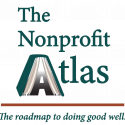Building Disaster Resilience with the MARCCD Framework

Disasters are intensifying and becoming more frequent, with the United States experiencing a surge in billion-dollar storms. In 2024 alone, the National Oceanic and Atmospheric Administration has confirmed 15 such disasters. The challenge extends beyond immediate relief; communities need sustained, flexible funding to rebuild and heal long-term.
The Center for Disaster Philanthropy highlights a critical issue: the current reactionary giving system is unsustainable. Continuous, repeated disasters exhaust funders and organizations, making it difficult to maintain resource flow. Communities need a more adaptive and resilient approach to disaster response.
The MARCCD framework offers a structured, phased strategy to address these challenges, ensuring communities are better prepared and supported throughout the disaster cycle. Let’s explore how nonprofits can leverage this model to enhance their disaster response efforts and build more resilient communities.
The MARCCD Framework
The Model for Adaptive Response to Complex Cyclical Disasters (MARCCD), developed in response to the COVID-19 pandemic and other recurring disasters, emphasizes a structured approach to disaster management.
It outlines four phases, each with specific actions for stakeholders like survivors, community leaders, and responders.
- Anticipation
- Impact
- Adaptation
- Growth & Recovery
Key aspects of the MARCCD framework:
- Phases of Disaster: Recognize the cyclical nature of disasters and prepare for each phase appropriately.
- Stress Regulation: Implement strategies to maintain healthy stress levels in affected populations.
- Community Stress Load: Address foundational issues and chronic stressors to mitigate the impact of acute stressors.
In summary, you must think holistically about disaster management. Food insecurity and access to employment opportunities may have been pre-existing and persisting emergencies. The road to recovery is long and hard, especially when disaster fatigue threatens resource generation in the months and years following a catastrophe’s initial impact. That’s why you must think about the ongoing disasters within a disaster.
Actionable Activities for Nonprofits
- Identify Key Phases and Prepare:
- Anticipation: Conduct regular drills and community training sessions to prepare for imminent disasters. Develop communication plans to manage anxiety and expectations.
- Impact: Mobilize resources quickly, focusing on immediate survival needs and ensuring the dissemination of accurate information.
- Support Adaptive Stress Regulation:
- Survivors: Offer mental health resources, encourage participation in community support groups, and promote activities like exercise and meditation.
- Community Leaders: Facilitate transparent communication, distribute resources equitably, and rebuild essential services swiftly.
- Responders: Provide training, mental health support, and ensure responders have adequate resources to maintain their well-being and efficacy.
- Assess and Strengthen Community Resilience:
- Conduct community surveys to identify chronic stressors and foundational issues.
- Develop programs targeting the most vulnerable populations, including racial minorities, people with disabilities, and low-income groups.
- Implement a Community Balance Sheet:
- Create a comprehensive inventory of community assets and liabilities related to disaster preparedness and response.
- Use this tool to prioritize interventions and allocate resources efficiently.
- Foster Collaboration and Learning:
- Build partnerships with local organizations, governments, and other nonprofits to share best practices and resources.
- Conduct after-action reviews following each disaster phase to integrate lessons learned into future preparedness plans.
By adopting these strategies, nonprofits can enhance their capacity to respond to complex, cyclical disasters, ensuring a more resilient and adaptive community. For more details, visit the MARCCD website.
The Nonprofit Atlas connects the dots for any “do-gooders” to do the most good. We provide the roadmap to doing good well. We simplify the work of securing resources, relationships, and best practices that fuel a mission and realize a vision. See us in action with a FREE 30-minute consultation.
